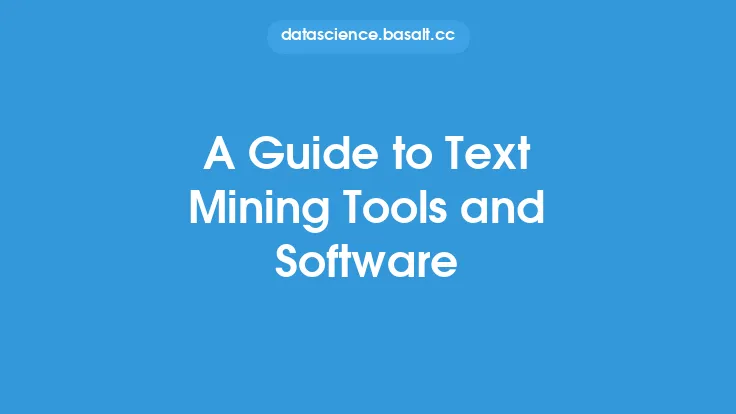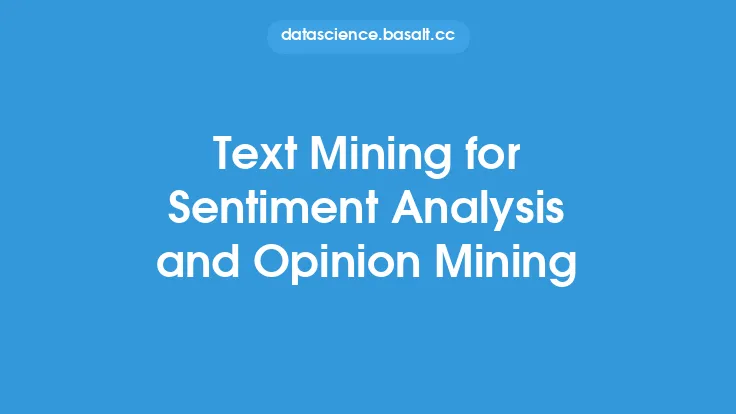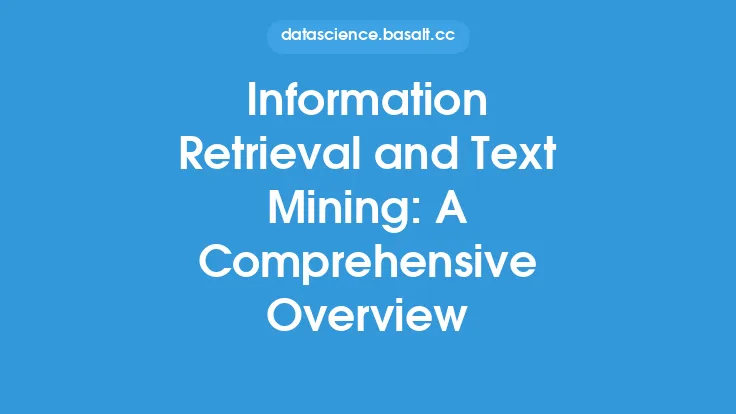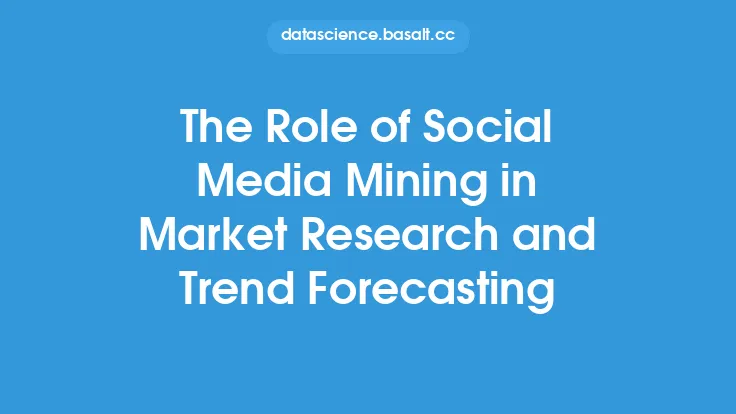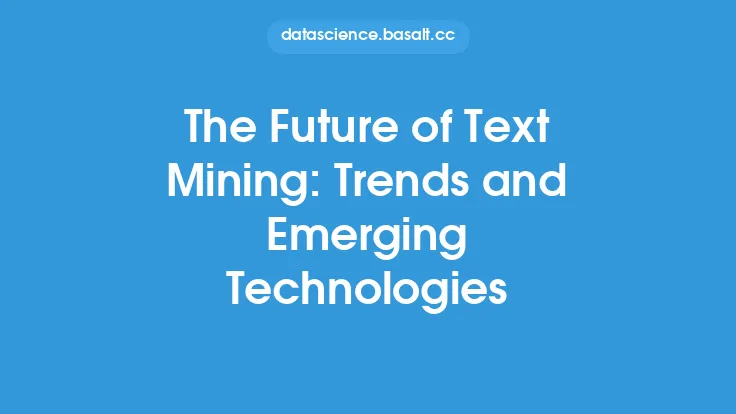The process of extracting valuable insights and patterns from large amounts of text data is known as text mining, which has become a crucial aspect of business and research in recent years. With the exponential growth of unstructured data, organizations are leveraging text mining applications to uncover hidden relationships, trends, and patterns that can inform strategic decisions. In this article, we will delve into the world of text mining applications, exploring their significance, techniques, and applications in business and research.
Introduction to Text Mining Applications
Text mining applications involve the use of various techniques, including natural language processing (NLP), information retrieval, and machine learning, to extract insights from unstructured text data. These applications can be categorized into several types, including text classification, clustering, sentiment analysis, and information extraction. Text classification involves assigning a category or label to a piece of text, while clustering involves grouping similar texts together. Sentiment analysis involves determining the emotional tone or sentiment of a piece of text, and information extraction involves extracting specific information or entities from text data.
Text Mining Techniques
Several text mining techniques are used in business and research, including term frequency-inverse document frequency (TF-IDF), latent Dirichlet allocation (LDA), and named entity recognition (NER). TF-IDF is a technique used to weigh the importance of words in a document based on their frequency and rarity across a corpus. LDA is a topic modeling technique used to identify underlying themes or topics in a large corpus of text data. NER is a technique used to extract and classify named entities, such as people, places, and organizations, from unstructured text data. These techniques are often combined and applied to various text mining applications, including text classification, clustering, and sentiment analysis.
Business Applications of Text Mining
Text mining has numerous applications in business, including customer feedback analysis, market research, and competitive intelligence. Customer feedback analysis involves analyzing customer reviews, complaints, and feedback to identify areas of improvement and measure customer satisfaction. Market research involves analyzing large amounts of text data, including social media posts, online reviews, and forums, to understand market trends and consumer behavior. Competitive intelligence involves analyzing text data from competitors, including news articles, press releases, and social media posts, to gain insights into their strategies and operations. Text mining can also be used to analyze and improve business processes, including customer service, sales, and marketing.
Research Applications of Text Mining
Text mining has numerous applications in research, including scientific literature analysis, social media analysis, and historical text analysis. Scientific literature analysis involves analyzing large amounts of scientific text data, including research papers and articles, to identify trends, patterns, and relationships. Social media analysis involves analyzing social media posts and online conversations to understand public opinion, sentiment, and behavior. Historical text analysis involves analyzing historical texts, including books, letters, and documents, to understand historical events, trends, and patterns. Text mining can also be used to analyze and understand large amounts of text data in various fields, including medicine, law, and finance.
Challenges and Limitations of Text Mining
Despite its numerous applications and benefits, text mining faces several challenges and limitations, including data quality, noise, and ambiguity. Data quality issues, including spelling mistakes, grammatical errors, and inconsistencies, can affect the accuracy and reliability of text mining results. Noise, including irrelevant or redundant data, can also affect the accuracy and efficiency of text mining algorithms. Ambiguity, including homonyms, synonyms, and context-dependent words, can make it difficult to extract accurate insights from text data. To overcome these challenges, text mining techniques, including data preprocessing, feature extraction, and machine learning, are used to improve the quality and accuracy of text mining results.
Real-World Examples of Text Mining Applications
Several organizations and companies are using text mining applications to gain insights and improve their operations. For example, a company like Amazon uses text mining to analyze customer reviews and feedback to improve its products and services. A company like Google uses text mining to analyze large amounts of text data, including web pages and online conversations, to improve its search engine and advertising algorithms. A research institution like the National Institutes of Health (NIH) uses text mining to analyze large amounts of scientific text data, including research papers and articles, to understand trends and patterns in medical research. These examples demonstrate the significance and potential of text mining applications in business and research.
Conclusion
In conclusion, text mining applications have become a crucial aspect of business and research, enabling organizations to extract valuable insights and patterns from large amounts of text data. With the exponential growth of unstructured data, text mining techniques, including NLP, information retrieval, and machine learning, are being used to uncover hidden relationships, trends, and patterns. While text mining faces several challenges and limitations, including data quality, noise, and ambiguity, its applications and benefits are numerous and significant. As the field of text mining continues to evolve, we can expect to see new and innovative applications in business and research, enabling organizations to make informed decisions and drive growth and innovation.

